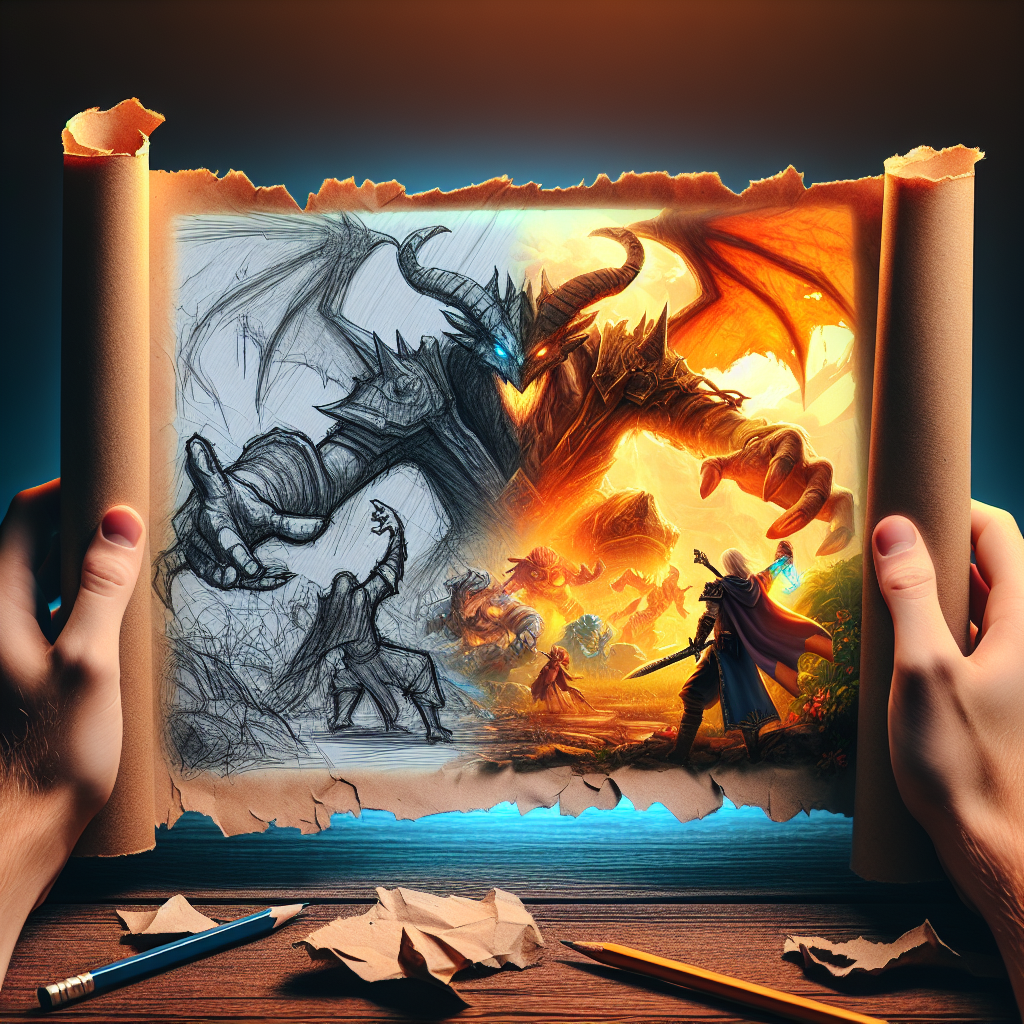From Sketch to Screen: The Journey of Creating Fan Art for Gamers
In the vibrant world of gaming, creativity knows no bounds. Players are not just passive recipients of digital experiences; they actively engage with the characters, stories, and environments that unfold on their screens. One of the most striking ways this engagement manifests is through fan art. This unique blend of passion, skill, and imagination transforms the experience of gaming from mere play into an art form. In this article, we explore the journey from sketch to screen, highlighting the creative process of crafting fan art for gamers.
Inspiration: The Seed of Creativity
Every piece of fan art begins with inspiration. For gamers, this spark often comes from their favorite titles, characters, or epic moments within a game. Whether it’s the vibrant landscapes of an open world, the intricate designs of a beloved character, or the emotional weight of a narrative, these elements ignite the creative flame.
Artists might draw inspiration from various sources: personal experiences, community interactions, or even other artists. Platforms like DeviantArt, ArtStation, and social media have cultivated communities that celebrate fan art, making it easier for creators to share ideas and draw inspiration from one another. The art of remixing existing characters and narratives not only honors the original creators but also allows artists to place their unique spin on well-known elements.
The Sketching Phase: Translating Vision to Paper
With a clear inspiration in mind, the artist begins the sketching phase. This initial stage involves quick drafts that capture the essence of the idea—whether it’s a stylized portrait of a character or a dynamic scene featuring multiple characters in action. Artists often create multiple iterations, refining their sketches until they arrive at a composition that resonates with their vision.
This phase is crucial; it allows the artist to explore different angles, poses, and elements before committing to more detailed work. Quick sketches serve as a playground for experimentation, helping the artist discover new ideas that might enhance the final piece.
Digitizing the Art: The Transition to Digital
In today’s digital age, many artists digitize their sketches, either by scanning them or using a tablet for direct input. This shift opens up an expansive toolbox of options. Software like Adobe Photoshop, Corel Painter, or Procreate enables artists to manipulate their sketches, add color, and apply textures with ease.
Digital tools also allow for layering, which gives artists the freedom to experiment without the fear of permanently altering their existing work. The blending of colors, use of brushes, and adjustment of opacity can help achieve the desired atmosphere and style. This versatile medium empowers artists to create stylistically diverse works that resonate with both themselves and the gaming community.
The Coloring Process: Bringing Art to Life
Once the sketch is digitized, the coloring process begins. This phase involves selecting a color palette that enhances the mood of the piece—bright and bold colors for a lighthearted game, or darker tones for a more somber atmosphere. Artists typically block in base colors before gradually adding depth with shadows, highlights, and details.
In this stage, artists may also incorporate textures and visual effects that reflect the game’s stylistic choices. For example, achieving a cel-shaded look reminiscent of anime-inspired games requires attention to light and shadow, ensuring that the final piece remains true to its source material while showcasing the artist’s creativity.
Final Touches: Polishing the Piece
As the fan art takes shape, attention to detail becomes paramount. Artists apply final touches, adjusting contrasts, sharpening lines, and enhancing colors to create a polished, cohesive piece. This part of the journey is about refining the artwork until it resonates with the original inspiration while reflecting the artist’s unique style.
Incorporating feedback from peers or utilizing online communities can also be valuable. Many artists share their progress on platforms like Twitter and Instagram, inviting constructive criticism and suggestions that can elevate their work further.
Sharing the Art: Engaging with the Community
Once the piece is complete, the artist prepares to share their creation with the gaming community. This step is immensely gratifying, as it involves showcasing their work on social media, art platforms, and even during gaming conventions. Engaging with fellow fans and artists nurtures a sense of belonging and fuels the passion that inspired the piece in the first place.
Art can transcend language barriers, connecting people through mutual admiration for a beloved game or character. This interconnectedness fosters community, leading to collaborations, art challenges, and exchanges that celebrate creativity and shared experiences.
Conclusion: The Power of Fan Art
The journey from sketch to screen reveals the profound connection between gamers and artists. Fan art serves as a testament to the impact that games have on individuals, transforming players into creators and spectators into storytellers. It embodies the essence of fandom, celebrating beloved characters, and enriching the gaming landscape with fresh interpretations and styles.
As long as there are games that inspire passion and creativity, fan art will continue to flourish, breathing life into pixels and narratives that captivate hearts across the globe. For artists, every sketch is not just a piece of art; it’s a bridge connecting their world to that of fellow gamers, a canvas upon which stories unfold, and a celebration of the shared joy that gaming brings to life.




